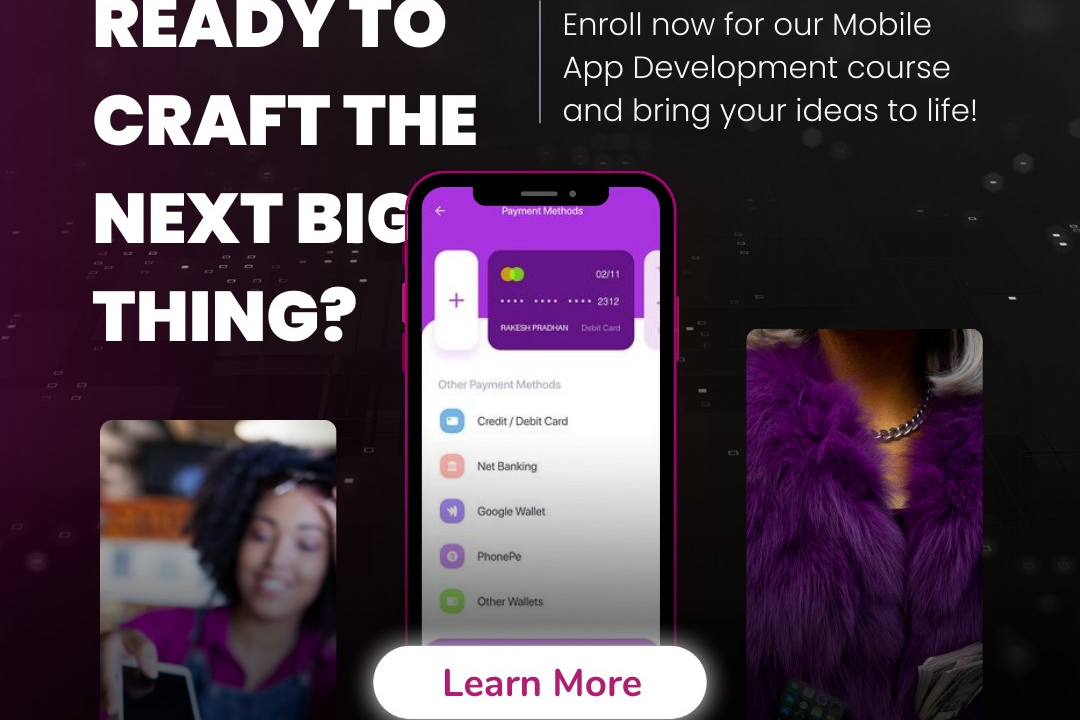Mobile App User Interface Design
Innovative Approaches to Mobile App UI Design
Mobile App User Interface Design
Mobile app user interface (UI) design focuses on crafting intuitive, visually appealing, and user-friendly interfaces for mobile applications. It involves the strategic arrangement of elements such as buttons, menus, icons, and text to enhance usability and deliver a seamless user experience. Key principles include ensuring clarity, accessibility, and responsiveness, which cater to various screen sizes and orientations. Designers often prioritize touch interactions and minimize complexity, thereby allowing users to navigate effortlessly. Additionally, incorporating consistent branding and aesthetics enhances engagement and retention, ultimately leading to a successful mobile app that meets users' needs and expectations.
To Download Our Brochure: https://www.justacademy.co/download-brochure-for-free
Message us for more information: +91 9987184296
1 - Understanding UI vs. UX: UI (User Interface) focuses on the look and layout of an app, while UX (User Experience) encompasses the overall feel and flow. This distinction is crucial for effective design.
2) Importance of User Research: Conducting user research helps designers understand their target audience, their needs, and pain points, allowing for more effective design solutions.
3) Wireframing: Creating wireframes is a vital step in the design process. It allows designers to outline the app’s structure and layout without getting distracted by design details.
4) Prototyping: Prototypes enable designers to visualize workflows and interactions before building the app, helping to identify potential issues early on.
5) Responsive Design: Mobile apps must accommodate various screen sizes and orientations. Responsive design ensures a seamless experience across devices.
6) Navigation Patterns: Understanding common navigation patterns (like bottom navigation, tab bars, and side menus) is key to helping users find their way around an app easily.
7) Consistency in Design: Maintaining a consistent design language (colors, fonts, buttons) throughout the app enhances usability and creates a cohesive experience.
8) Visual Hierarchy: Establishing a clear visual hierarchy helps guide users’ attention to the most important elements on the screen, improving usability.
9) Color Theory: Understanding color psychology can significantly impact user emotions and actions. It’s essential to choose colors that align with the brand and evoke the desired responses.
10) Typography: Selecting the right fonts is crucial for readability and branding. Consistent typography helps establish a tone and makes the app easier to use.
11) Touch Targets: Ensuring that buttons and interactive elements are large enough for easy tapping is essential for mobile finger navigation, enhancing user satisfaction.
12) Feedback Mechanisms: Incorporating visual or auditory feedback (like button animations or sounds) helps users understand when actions are performed successfully.
13) Accessibility: Designing for accessibility ensures that apps are usable for everyone, including those with disabilities. This involves providing text alternatives, color contrast, and navigational aids.
14) User Testing: Regularly conducting user testing throughout the design process helps gather feedback on usability and design choices, leading to continuous improvement.
15) Keeping Up with Trends: The mobile design landscape is constantly evolving. Staying updated with current design trends and best practices can help future proof an app.
16) Design Systems: Developing a design system can streamline the design process. A design system provides reusable components and guidelines to promote consistency and efficiency.
17) Onboarding: Creating a smooth onboarding experience helps users understand the app quickly and encourages them to engage with it fully.
18) Minimizing Load Times: Optimizing UI elements and images helps ensure that the app loads quickly, contributing to user satisfaction and retention.
19) Error Prevention and Recovery: Designing intuitive error messages and recovery options can help users navigate mistakes more effectively.
20) Iterative Design Process: Emphasizing an iterative approach allows for continual refinement and adaptation of the app UI based on user feedback and changing needs.
These points can serve as a structured foundation for a training program on mobile app user interface design, enabling students to understand key concepts and best practices for creating effective and user friendly mobile applications.
Browse our course links : https://www.justacademy.co/all-courses
To Join our FREE DEMO Session: Click Here
Contact Us for more info:
javA strIng maNipuLatIon
Angular 8 folder structure best practices
java training institutes in pune hadapsar
Java 8 Programming Interview Questions 2024
Android Code Optimization











